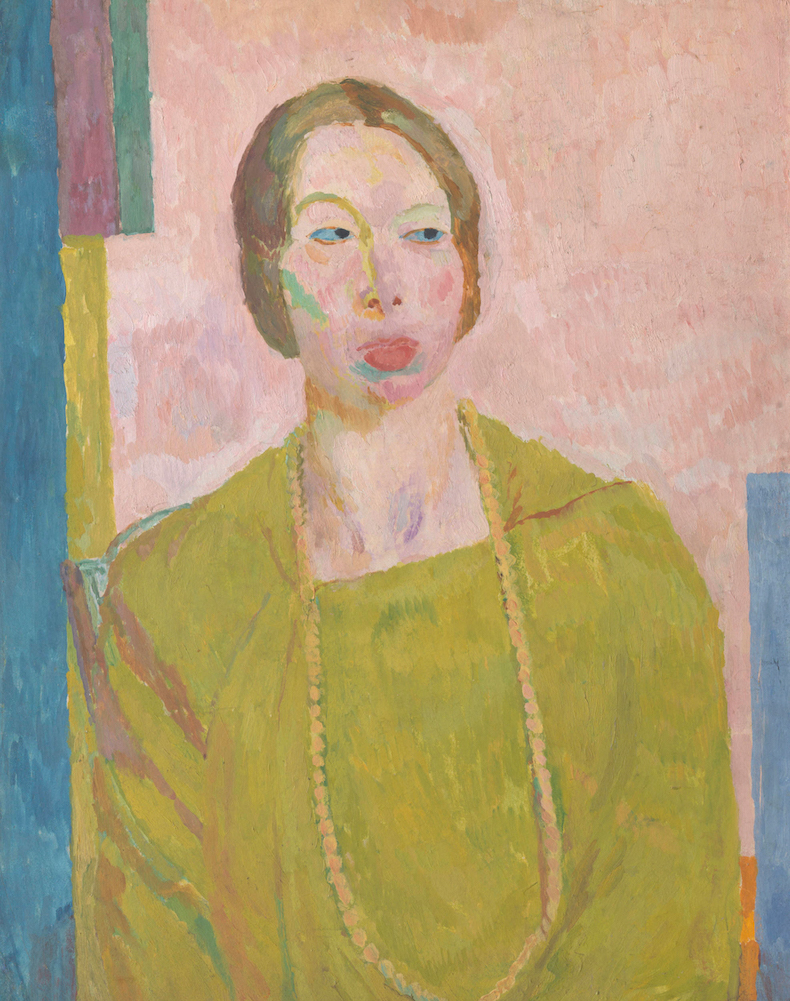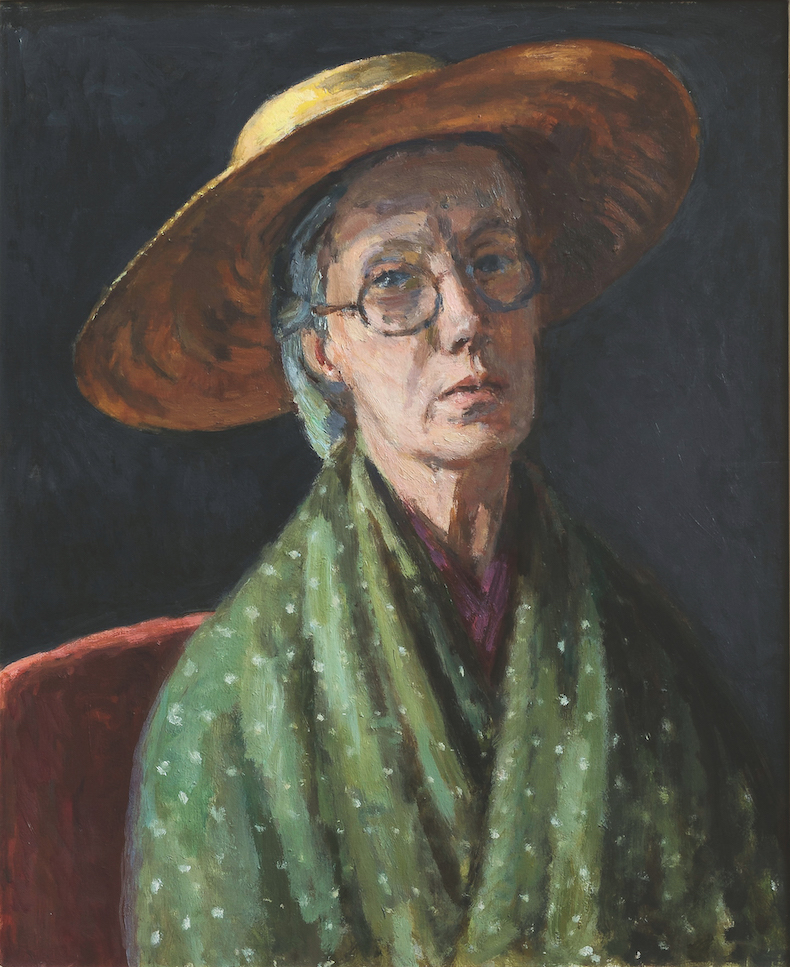This review of Vanessa Bell: The Life and Art of a Bloomsbury Radical by Wendy Hitchmough appears in the June 2025 issue of Apollo. Preview and subscribe here.
In 1916, Vanessa Bell moved to Sussex with her lover Duncan Grant, his lover David Garnett and the two sons she had by her husband, Clive, who paid visits to the unconventional ménage with his latest flame, Mary, in tow. Before she got down to decorating the dilapidated farmhouse known as Charleston, she wrote to her faithful correspondent (and just-jilted paramour), the art critic Roger Fry: ‘It will be an odd life, won’t it, but it seems to me it ought to be a good one for painting.’
Wendy Hitchmough tests that wager, introducing us to the work of a woman who has never quite escaped second-billing in the Bloomsbury Group. A painter in a world of writers, Bell’s reputation has long rested on the especially quotable prose of her sister, Virginia Woolf, about whom she complained, in 1910: ‘Virginia since early youth has made it her business to create a character for me according to her wishes & has now […] succeeded in imposing it on the whole world.’ This timely monograph, arriving in anticipation of Tate Britain’s exhibition ‘Vanessa Bell & Duncan Grant’ next year, gives the pen – or rather, the brush – back to a painter who admitted that she couldn’t ‘write art criticism’ at a time when her friends did. Though the letters quoted throughout the book show that Vanessa was rarely at a loss for words, Hitchmough contends that the artist’s most compelling arguments were made ‘in paint’.

Mrs St John Hutchinson (c. 1915), Vanessa Bell. Tate, London. Photo: © Tate; © Estate of Vanessa Bell. All rights reserved, DACS 2024; currently on display at Tate St Ives
Bell, née Stephen, moved to Bloomsbury from Hyde Park in 1904. At 22 Hyde Park Gate, she was a scion of the 19th century’s artistic and intellectual elite, the daughter of Sir Leslie Stephen, a biographer, and Julia Duckworth, favoured muse of painters such as Edward Burne-Jones and George Frederic Watts. When her stepsister Stella died soon after their mother, Vanessa assumed the domestic duties typical of a woman of her rank, if not her age. She split her time between balancing the books at home and taking life-drawing classes at local academies. When Leslie Stephen died, it was without remorse that Vanessa sold the house and furniture and took rooms in a district home to suffragettes and socialists, but she kept the five large-format photographs of her mother taken by her great aunt Julia Margaret Cameron and hung them in the vestibule. It was an early indicator that Bloomsbury would never quite shake the Victorian inheritance it claimed to abhor.
At 46 Gordon Square, Vanessa made a craft out of the domestic drudgery into which she had been initiated at Hyde Park Gate. What Hitchmough calls her ‘invisible labour’ – arranging rooms, ordering dinners and mailing invitations – brought into contact figures who would each be credited for modernising their respective fields: the economist John Maynard Keynes, the art historian Roger Fry, and the painter (and Vanessa’s lifelong collaborator) Duncan Grant. Hitchmough celebrates Vanessa as a ‘place maker’, a bland rebranding of the more familiar ‘home maker’ that still retains traces of the latter’s baggage. Perhaps it is better to say that her talent lay in composition: of people as well as canvases.

Self-Portrait (c. 1915), Vanessa Bell. Charleston Trust
Though Vanessa was a consummate hostess, organising dinners for Derain and Picasso, as well as a top-notch schmoozer, touring Florence with Vernon Lee and Paris with Gertrude Stein, she was also an early convert to abstract painting. Some critics complained that her work wore its origins too crudely, and paintings such as Study of a Woman (c. 1916–17) or the distempered screen Bathers in a Landscape (1913) can feel like garden-variety rehashings of Cézanne, Picasso and Modigliani. But others, such as A Conversation (1913–16), transform less obvious sources: a Giottesque woman in black hunches towards two companions whose steeply sloped faces suggest Kirchner’s pinched planes. Great swathes of smock recall the Fauvists’ constricted palette, but also suggest the blocking of single colour characteristic of the mosaic technique with which Vanessa was experimenting. And while at first glance the encounter might seem to take place in a voguish theatre box, in the manner of Cassatt or Sickert, these three companions are actually conversing before a window that looks on to the bright daubs of springtime blooms. To find in the quotidian the gravity of the Arena Chapel and the allure of a Berlin boulevard or a Camden Town stage was a move that roused her sister’s ‘envy’.
For Vanessa, painting was a portal to ‘another world’. More specifically, it was an escape from the ‘railway station’ of home life. Maternity is the subject of her most powerful paintings: the sleeping slip of paint that is Julian Bell (1908); a stillborn ‘nativity’, Woman and Baby (c. 1912, now lost), made after a miscarriage; the stilted world that a reluctant Madonna forsakes in Studland Beach (c. 1912). Whether these amount to an ‘objectivity and a determination to inject an alternative reality into the Post-Impressionist fictions with which she was surrounded’ and a ‘challenge to the male gaze’, as Hitchmough claims, is debatable. The author’s sensitive readings themselves suggest more nuanced possibilities.

Julian Bell (1908), Vanessa Bell. Charleston Trust
With Fry and Grant, she started the Omega Workshops, which brought modern design to the mainstream, and the Grafton Group, which held room for a cross-Channel avant-garde in the xenophobic years surrounding the First World War. That both were built on principles of anonymity and collaboration helped, in the short term, to get her work shown, but in the long run, ensured that credit would go to her male colleagues. Her relegation to the footnotes of modernism was a prospect she predicted. In 1923, the Burlington Magazine dubbed her ‘the most important woman painter in Europe’, but she was under no illusion that her legacy would live up to that sobriquet. Vanessa died in 1961 and, when Bloomsbury came back into vogue, some of her unsigned works at Charleston were attributed to Grant. It was a bitter irony for an artist who wrote ‘how terrified’ she was of the ‘usual female fate’ – but not one that would have surprised her.
Vanessa Bell: The Life and Art of a Bloomsbury Radical by Wendy Hitchmough is published by Yale University Press.
From the June 2025 issue of Apollo. Preview and subscribe here.














![Masterpiece [Re]discovery 2022. Photo: Ben Fisher Photography, courtesy of Masterpiece London](http://zephr.apollo-magazine.com/wp-content/uploads/2022/07/MPL2022_4263.jpg)
‘Like landscape, his objects seem to breathe’: Gordon Baldwin (1932–2025)